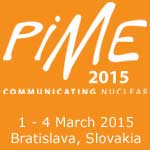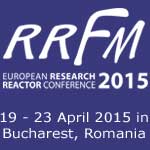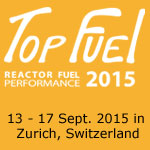
ENS NEWS N° 46: IntroHinkley Point is a picturesque, isolated headland on the Somerset coast, in South West England. It lies at the edge of the gently rolling Quantock Hills, England’s first officially nominated ‘Area of Outstanding Natural Beauty.’ At first sight this idyllic backwater seems more likely to induce passion among birdwatchers, archaeologists and geologists (due to the important Bronze Age and Iron Age excavations discovered there), than among the European officials, politicians and activists that populate the Brussels bubble. But closer scrutiny reveals an altogether different story. Nuclear power and Hinkley Point have enjoyed a close association for a long time. Indeed, nuclear power has been an important feature of the industrial landscape in this part of rural England for almost 50 years. Hinkley Point A, a now decommissioned former Magnox power plant, began operating in 1965. Hinkley Point B, a 1,250 MWe advanced gas-cooled reactor (AGR) began operating in 1976 and is still going strong today. So, the decision by EDF Energy to build two new EPR reactors at Hinkley Point C (HPC) seemed a very logical one. However, EDF’s plan to construct the first nuclear reactors on British soil for 25 years was no ordinary industrial venture. It proposed a new and potentially ground breaking investment financing model called the ‘contracts for difference’ model (CfD) that that addressed the market’s failure to provide potential investors with a sufficient signal in favour of low-carbon energy alternatives to coal and gas. It aroused significant interest in the Brussels bubble. The EC decided that it needed to assess whether the HPC project contravened EU competition law. The enormity of what was at stake was not lost on either the advocates or the opponents of nuclear. Clearly, were the project to get the green light from the EC, a new nuclear age in the UK would be ushered in. HPC would create 25,000 jobs during construction and 9 00 once operational. It would boost the UK’s GDP (gross domestic product) by over €6 billion per year and generate about €130 million per year for the local economy. It will also create a lasting industrial benefit and provide reliable, low-carbon and affordable electricity for 5 million homes for up to 60 years. Suddenly, that sleepy part of South West England was catapulted from virtual anonymity (unless you happen to be a native of Somerset) to the centre of the EU energy policy arena. However, HPC’s significance stretches far beyond the borders of the UK. It is more than a standard-bearer for the UK’s ambitious new build programme, even though that in itself is quite a responsibility. The impact of a positive judgement on the whole European nuclear industry could be considerable. A number of countries in Europe are planning to build new reactors. Poland recently took the decision to go nuclear for the first time and is carrying out a site selection process. Not surprisingly then, countries with a vested interest in the EC’s HPC judgement watched intently to see what colour smoke would rise from the Berlaymont building in Brussels. Indeed, rarely has a judgement of the EC been the subject of such intense interest and media speculation. On the other hand, had the project been deemed contrary to EU competition law, this would have been a major setback for the UK, and potentially for Europe’s aspiring nuclear nations. In October the EC announced, much to the relief of both EDF Energy and the whole European nuclear fraternity that the HPC project conforms to EU competition law with regards to state aid. The sense of collective relief among all stakeholders was palpable. A massive obstacle to the realisation of the project had been removed. Of course, the nuclear industry knows better than to count its chickens before they are hatched. It reacted with measured satisfaction rather than euphoria. The EC’s ruling does not mean that the matter has been settled once and for all, far from it. Indeed, one EU Member State (Austria) has declared its intention to lodge a legal appeal against the ruling. The investors still have to be found and there is a long way to go before the first electricity generated at Hinkley Point C is connected to the grid. However, the approval of the project is unquestionably a major shot in the arm for the industry. It may well prompt other interested countries to follow suit and adopt a similar approach to finding the investors that are the life blood of new build projects. Furthermore, the favourable ruling has given fresh momentum to nuclear new build as a whole and put a spring in nuclear’s step. It might also have helped answer those tired old clichés that ‘nuclear is an outdated industry’ and ‘a relic of the past’. From a nuclear science and research perspective the news is equally welcome. A negative outcome could have badly impacted upon public acceptance and generally dented the confidence of the whole nuclear community. Instead, a new wave of optimism could help to maintain Europe’s global leadership role when it comes to reactor technology and engineering. This position has been earned due to the cutting edge research that the nuclear science community has carried out over the decades and to the technological expertise that it has nurtured. That research can now proceed with renewed impetus. There are already a variety of reactor types being considered for the UK’s new build programme and by aspiring ‘new builders’ – EDF’s EPR, Westinghouse’s AP 1000 and GE Hitachi’s Advanced Boiling Water Reactor (ABWR) - to name but three. This, together with the research that is being carried out into Generation III reactors, illustrates how new build is here to stay. Current and future research will focus, among other things, on sustaining and promoting that reality. Its contribution to the achievement of this objective could prove to be one of HPC’s greatest legacies.
|
||
PIME 2015 - Mark your diary!PIME 2015 will take place from 1 - 4 March 2015 in Bratislava, Slovak Republic. PIME, the conference on Public Information Materials Exchange, is the annual focal point for professional nuclear communicators all around the world. |
||
RRFM 201519 - 23 April 2014 in Bucharest, RomaniaCall for PapersIn 2015 the European Research Reactor Conference, RRFM, will take place in Bucharest, Romania. The conference programme will revolve around a series of plenary sessions dedicated to the latest global developments with regards to research reactor technology and management. |
||
TopFuel 201513 - 17 September 2015 in Zurich, SwitzerlandCall for PapersTopFuel’s primary objective is to bring together leading specialists in the field from around the world to analyse advances in nuclear fuel management technology and to use the findings of the latest cutting-edge research to help manufacture the high performance nuclear fuels of today and tomorrow. |



